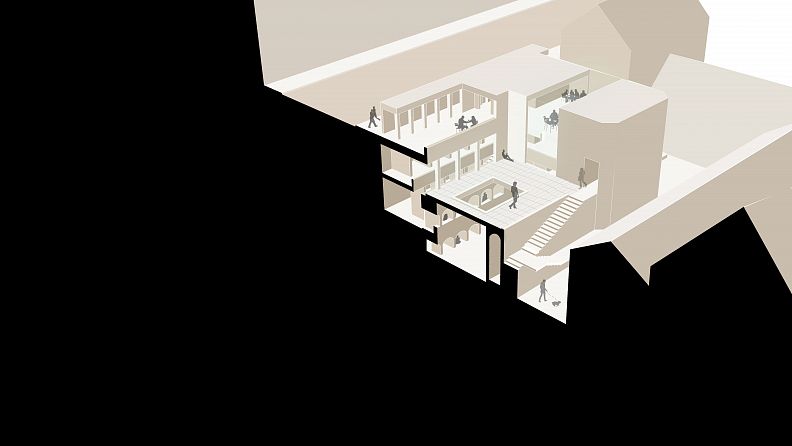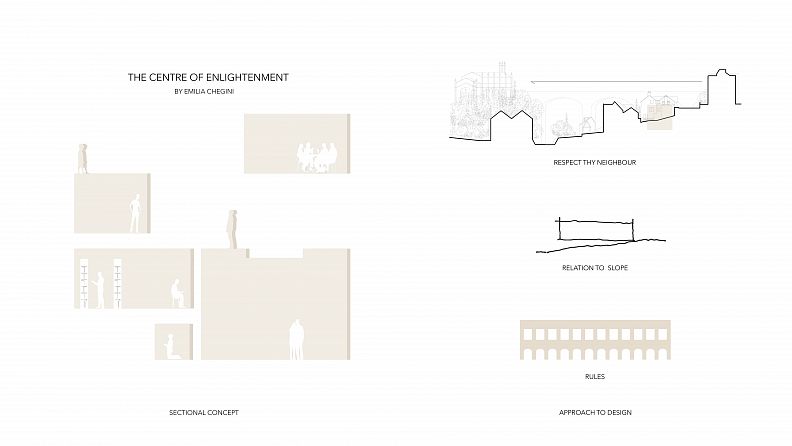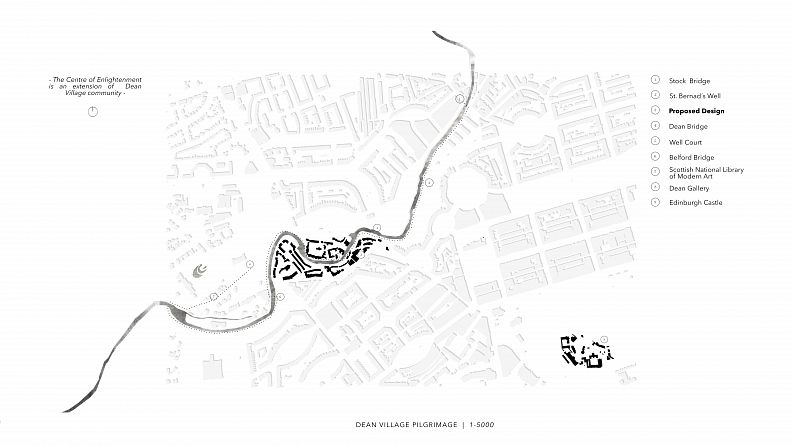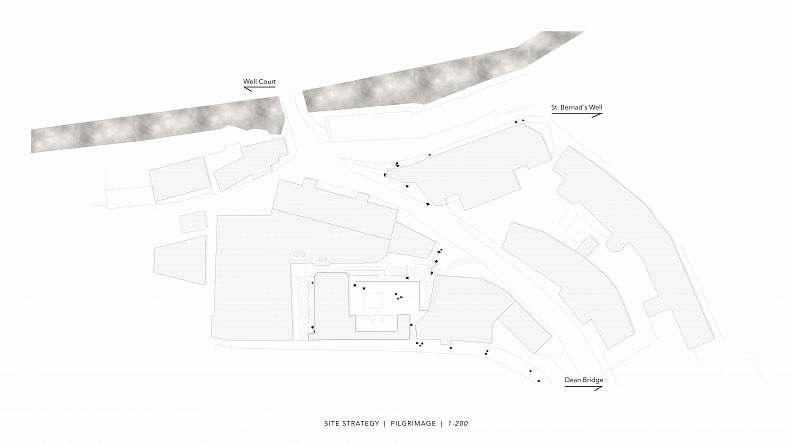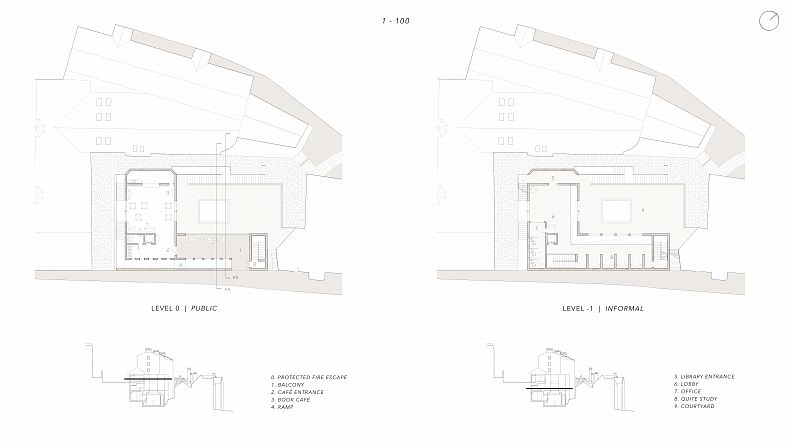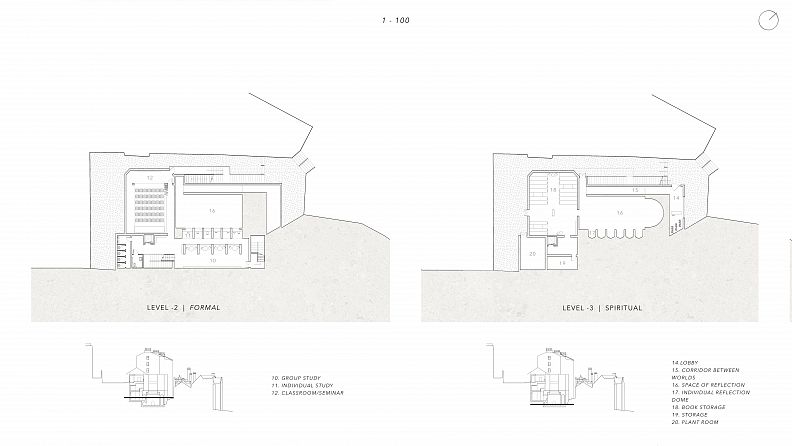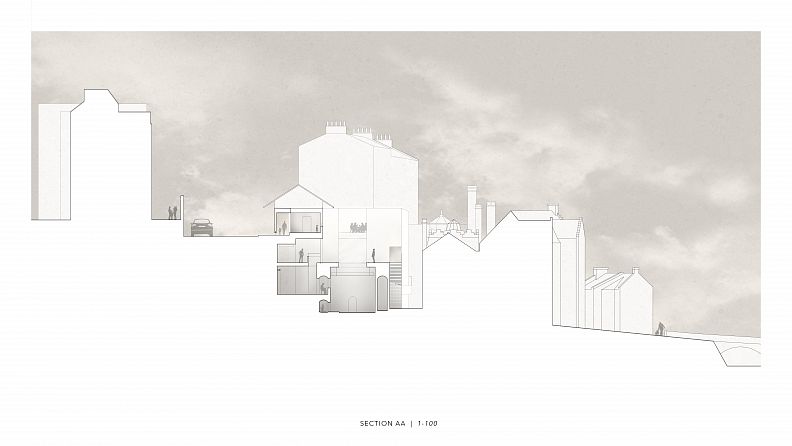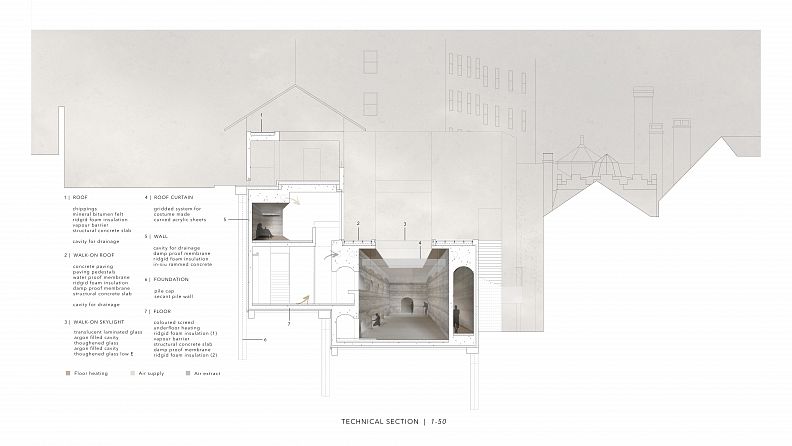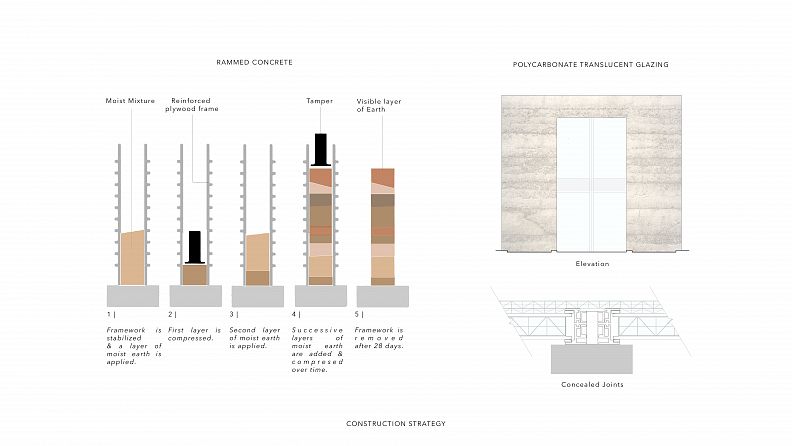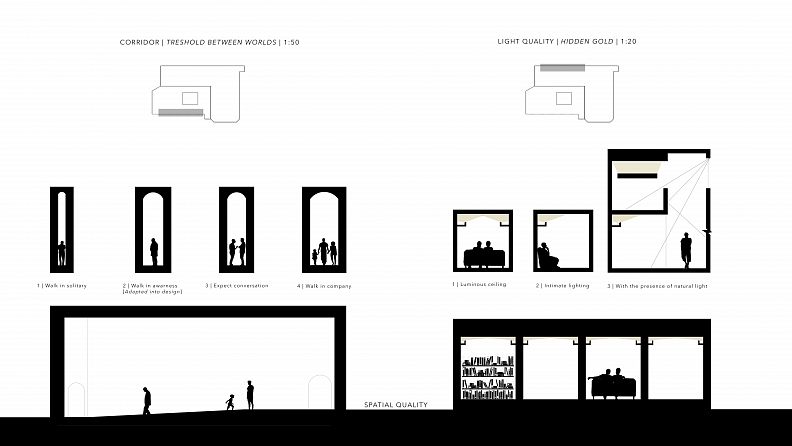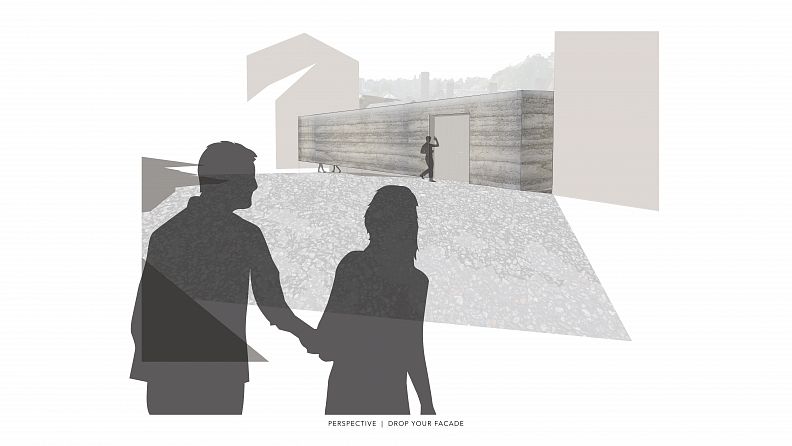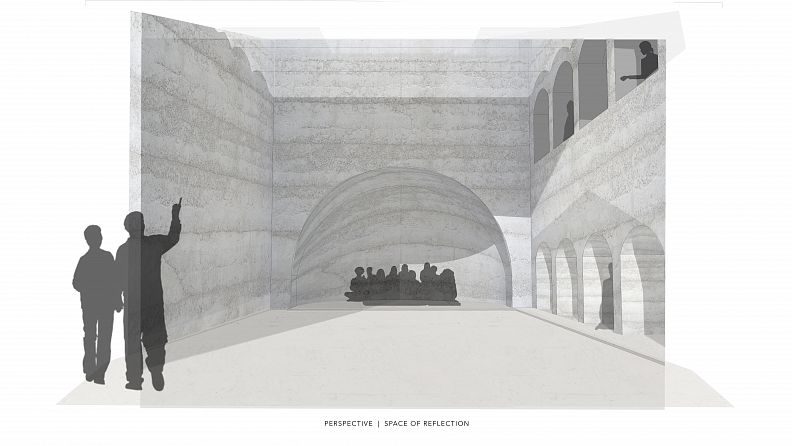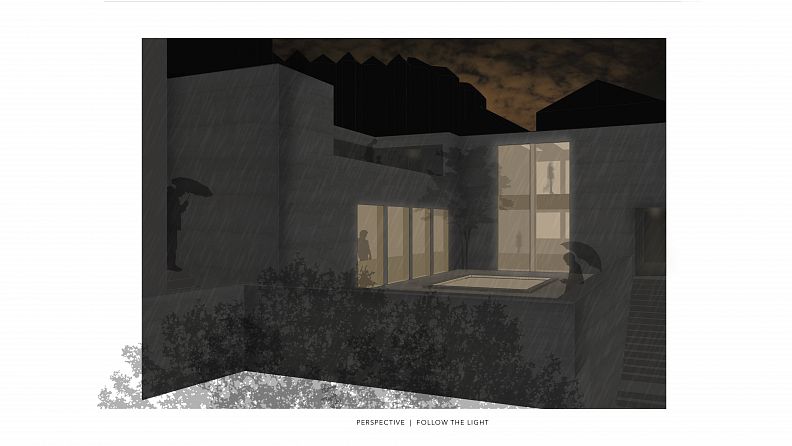The Centre of Enlightenment; Faith in Architecture

Project idea
Kyle Dugdale, a licensed architect and a critic at Yale School of Architecture, discusses to which capacity architecture can profess as an expression of faith in his essay `faith in Architecture´. The opening statement in this essay appraises Walter Gropius´s Bauhaus manifesto from 1919, which according to Dugdale calls "the reader to interpret architecture as an expression of faith" as well as "understanding architecture itself as an act of faith." This notion invites an interesting parallel statement that encouraged interest in the development of a brief addressing the current understanding of faith. When discussing elements where faith is expressed, different religions come to mind. Dugdale states the possibility of religion being constructed as a fiction developed by humans for humans in a way that, " [it] tells us more about ourselves, about histories, and about our prejudices, than it does about anything as absolute as an ultimate reality." The structure of faith within the major religious groups all have in common the worship of a singular God. My father, a man once devoted to both ends of extremism of his chosen religion, recently found faith in the middle and shared with me a Persian idiom which follows;
ما خدای خودمان هستیم
"We are the God of ourselves"
Interestingly is the word ´God´ in Farsi embedded within the word structure of the words; ‘myself’, ‘oneself’, and ‘ourselves’. This idiom acts as the foundation laid for this project as it has generated a discussion of what it means to be a God oneself. The same phenomenon is a Japanese term used in Zen Buddhism, known as Mushi-dokugo(無師独悟), translating as "awakening alone, without a master". Critical, reflective thinking is an integral part of meditation, in group or alone, although one should never proclaim the title as a master for others oneself. Reflective thinking is a tailored path, therefore, unique to its own follower. The challenge will be to adopt this thought into an architectural language in which, as Dugdale suggested, informs of ourselves.
The 20th century is a century in demand for instant gratification. A century of high paste in which the majority is spent online in the virtual world and not in reality. This disconnection from our material world necessitates a roadblock of sorts to slow down the paste and abid awareness of ourselves and our surroundings. This notion starts within oneself, evoked by the immaterial presence within carefully crafted spaces.
Immateriality is poetically communicated in Junichiro Tanizaki´s short essay `In Praise of Shadows´. He welcomes a discussion between what the Western and Oriental culture finds beautiful in materials, in space, in action, and in taste. While western culture appreciates the light, oriental culture appreciates darkness instead.
"The quality that we call beauty ... must always grow from the realities of life."
However, as Tanizaki clarified; the absence of light heightens our perception of what little exists. The absence of light seemed appropriate to be conceived as an advantage and help encourage the concept of reflection. By allowing construction to be built from top to bottom will result in layered floors, each with its own distinct light condition. One would find it disorientating in a space without windows, however, to enhance the depth of position within the structure this proposal tells a story through material properties found in the walls which make use of Peter Zumthor´s rammed concrete construction method. The layers visible in the walls describe the age of the building, once again, calling for attention to the little existent in time and space.
"Darkness and silence are beautiful, and both are getting harder and harder to find", Kengo Kuma commented on Tanizaki´z essay. This bespoken change of environment is developed as dark oblong corridors within the project, connecting contrasting environments while encouraging spatial awareness which in turn evokes self-awareness. The light at the end of the tunnel has in this context a symbolic matter.
By respecting the context of the site and surroundings, it was found appropriate to incorporate the history of Edinburgh as well as the popularity of Dean Village as a tourist destination. Vaulted domes function as self-reflection bays as a parallel to reconciliation rooms and confession rooms in sacred cohesions. However, the reference to vaults stems from two different origins. One is a reference to Edinburgh's Southbridge vaults from 1788 while the other embraces the sound quality found in domes.
Soft edges in domes and vaults are an evident element found in the typology of renaissance churches and mosques. Spatial awareness is communicated through structural properties in which a set of rules dictates the typology of the proposal.
The structure above ground level shall reflect the man-made line of right angles while structure below ground shall reminisce of carved out caves from the stone age. This visual is best depicted in a section through Cowgate valley, South of Edinburgh´s High Street.
With this critical appraisal in mind, the goal for this project is to encourage society to find enlightenment through mindful architecture and transparent rituals which will inform of ourselves to ourselves.
Project description
One will easily feel lost when facing standards set by the modern media in our current society which solely praise external beauty & material possessions. This unhealthy exposure alternates one's faith, whether it is religious or an unquestioning belief in a certain notion which calls for an architectural intervention. The proposed site in Dean Village, Edinburgh is desirable on several grounds. The absence of natural light, due to the sites sloping ground, presents the opportunity of introducing it back strategically and with care as the absence and desire are two sides of the same coin.
I am proposing a centre of self-enlightenment as an extension of our heterogeneous society. My proposal is, therefore, a statement of opposing realities, developed as two key spaces. Firstly, a library that houses blank books which will eventually develop into autobiographies as the ritual of anonymously sharing a story is a ritual of transparency. The library floors are layered in a manner that encourages observation which will leave visitors aware of oneself and others when transcending from and to different spaces. Secondly, a space below ground level will evoke self-reflection and self-awareness through its material properties and assembly of layers.
When knowledge and reflection are acted upon, one will then find self-enlightenment.
Technical information
The construction is mainly based on a rammed concrete method inspired by Peter Zumthor. The use of this method aspires to inform of the occupied space down to the very detail as each layer of concrete will indicate a day's manual labour. In an attempt to seize thermal gain throughout the building is frosted polycarbonate used as glazing with respect to the geographical location. All technical aspects are further visually informed.
